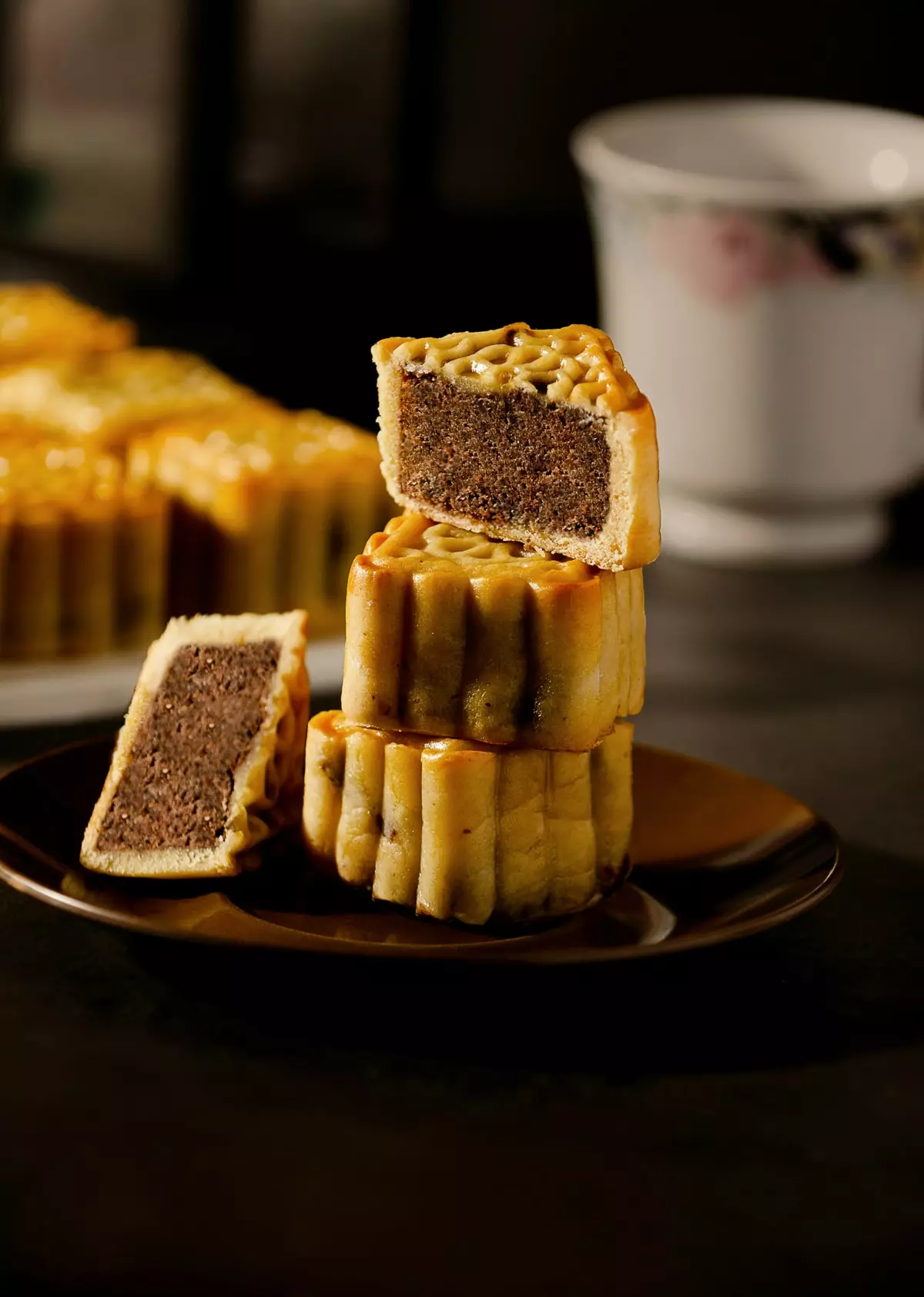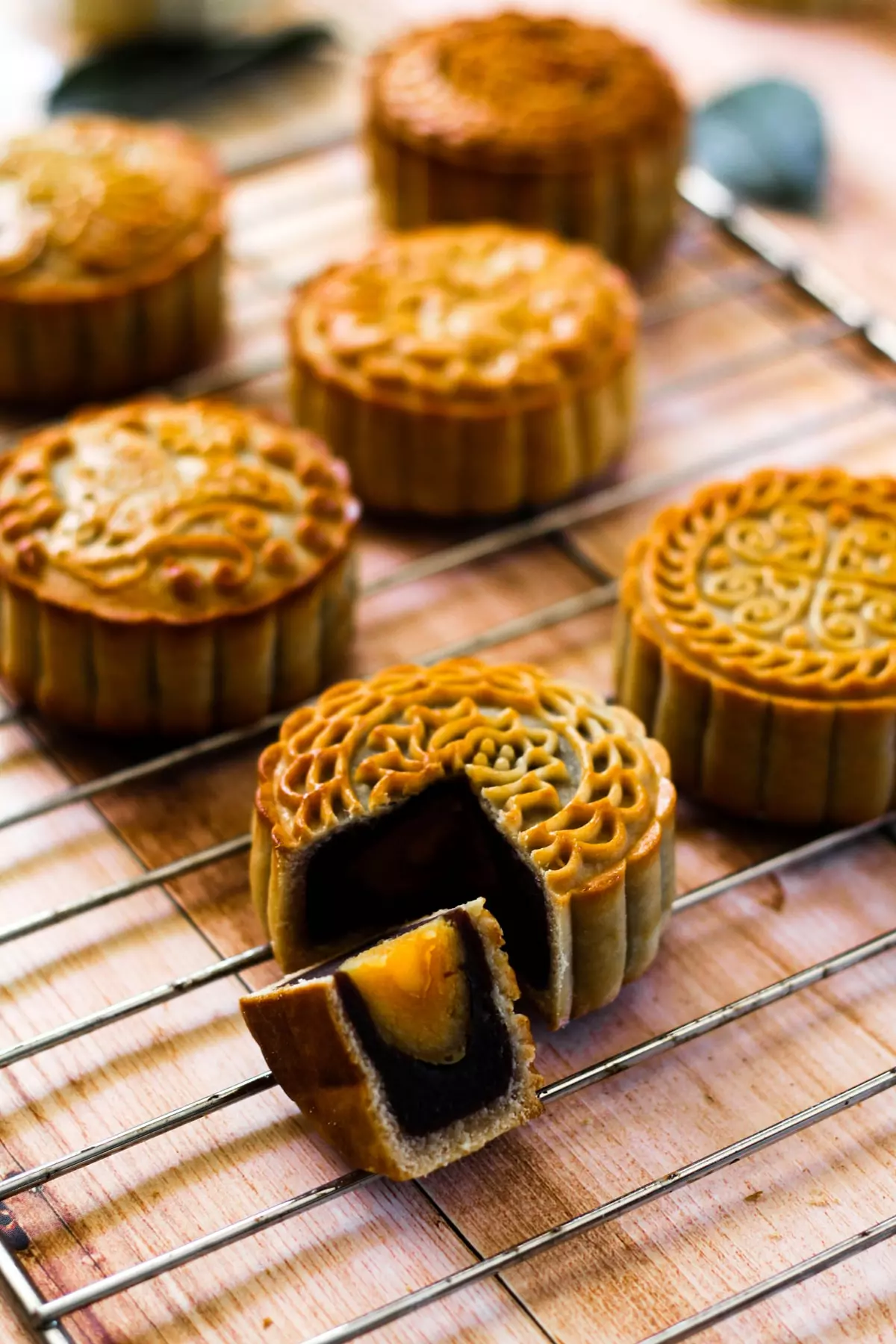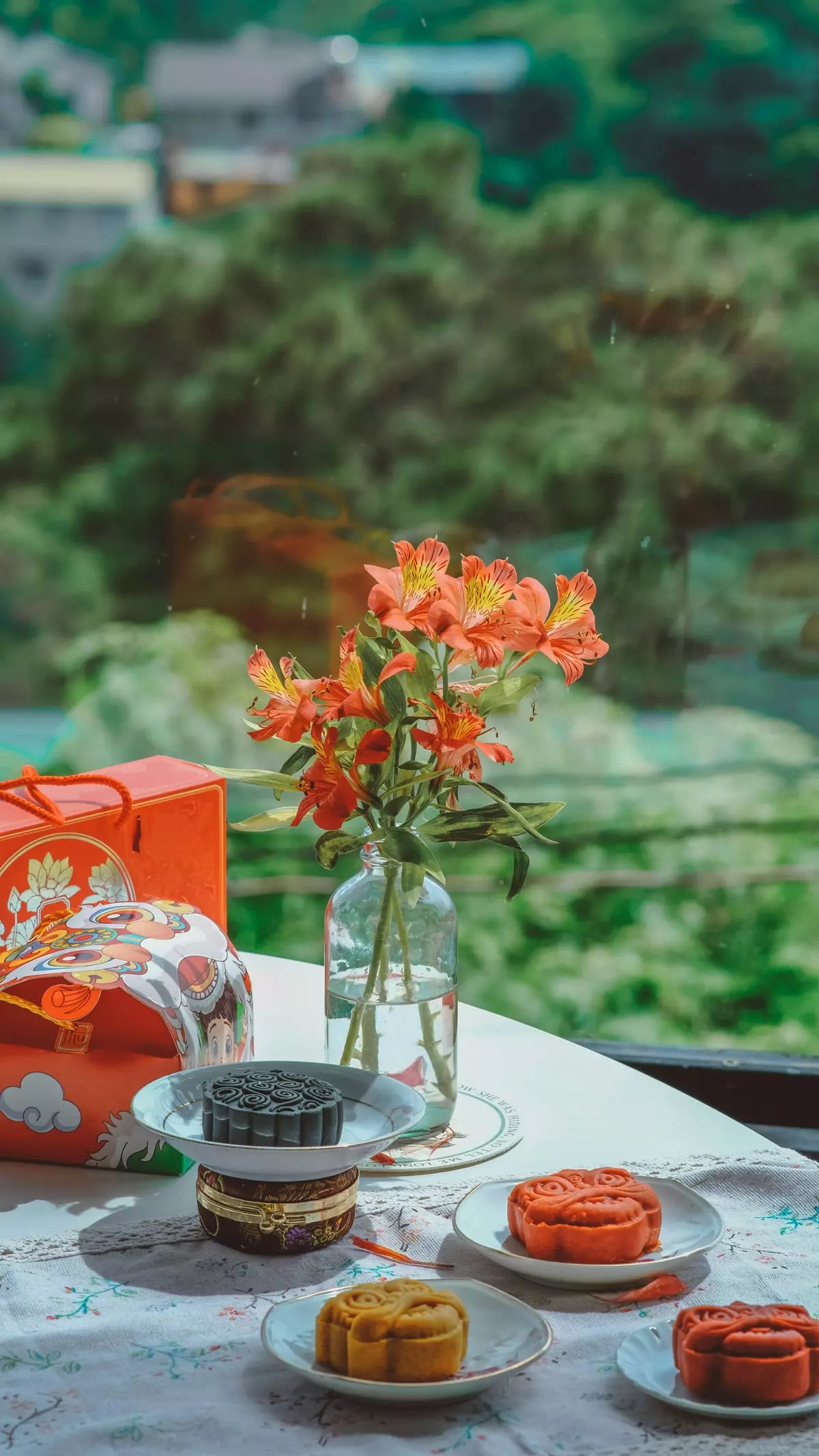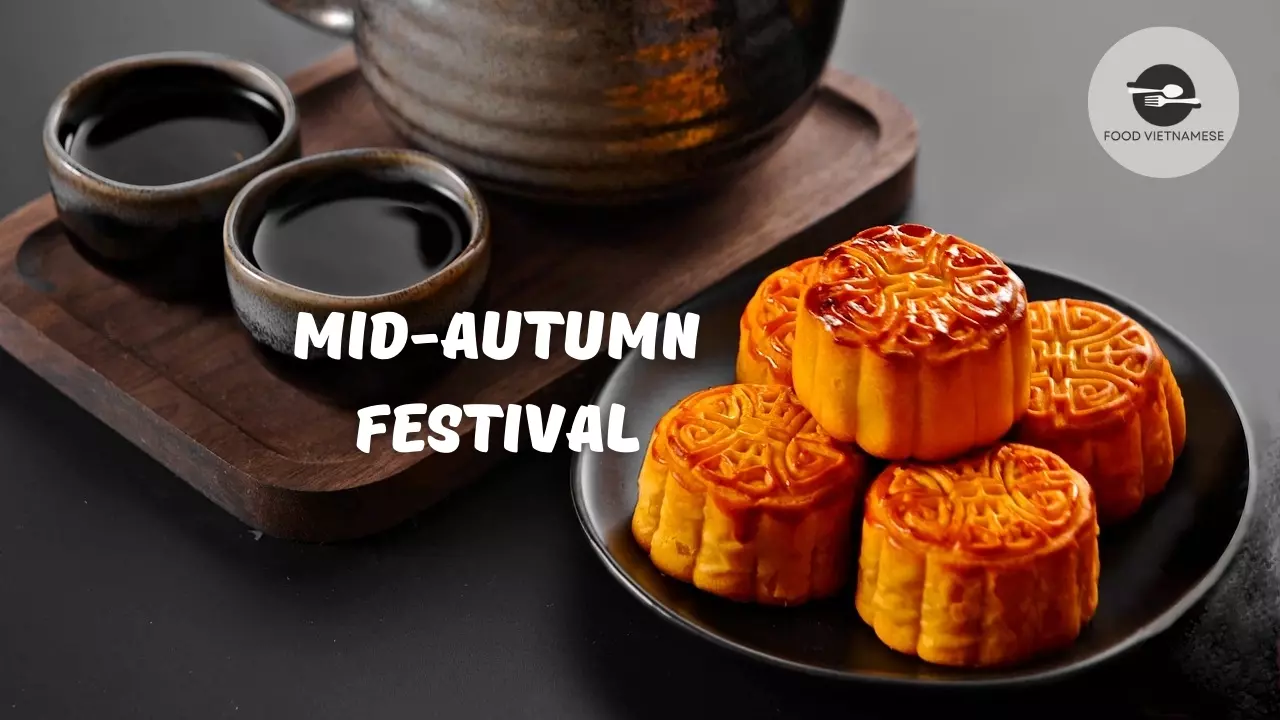The Mid-Autumn Festival, also known as the Moon Festival, is a significant cultural celebration celebrated by millions around the globe, particularly within Asian communities. This harvest festival typically falls on the 15th day of the eighth lunar month, when the moon is believed to be at its fullest and brightest. The festival is rich with tradition and symbolism, as it fosters themes of reunion, gratitude, and appreciation for the harvest. At the heart of this celebration lie mooncakes, a traditional pastry that serves as both a delicacy and an emblem of unity.
Mooncakes are round pastries often filled with a variety of sweet or savory fillings, each carrying cultural significance. Their shape symbolizes completeness and togetherness elements that resonate with families gathering during this time to share food, stories, and the beauty of the full moon. As families partake in moon gazing, storytelling, and feasting on various celebratory foods, the festival not only nurtures familial bonds but also extends into communities through the sharing of mooncakes as gifts. This article will delve into the many facets of the Mid-Autumn Festival, exploring mooncakes in depth, alongside other traditional dishes and practices that enhance the celebration.

Mid-Autumn Festival
Mooncakes: Traditional and Modern Variations
Mooncakes are the prized centerpiece of the Mid-Autumn Festival, akin to a beautifully decorated Christmas tree during the holiday season. These round pastries come in an array of flavors and styles, distinguishing themselves across different regions, cultures, and contemporary culinary creativity.

Mooncakes
Classic Variations
Traditional mooncakes can be categorized primarily into several types:
- Cantonese Mooncakes: Characterized by a shiny, golden-brown crust, these mooncakes are often filled with lotus seed paste, red bean paste, or salted egg yolks. They tend to be sweet and rich, making them a festival favorite.
- Teochew Mooncakes: These pastries stand out with their flaky, spiral crust and may be filled with yam paste, mixed nuts, or salted egg yolks.
- Shanghai Mooncakes: Filled with sweeter pastes and often more buttery, these mooncakes are known for their crumbly texture.
- Suzhou and Hokkien Mooncakes: While Suzhou mooncakes may have both sweet and savory fillings, Hokkien mooncakes are notable for their unique inclusion of tangerine peels, symbolizing good luck for students.
Modern Variations
In today’s culinary world, modern interpretations of mooncakes challenge traditional recipes.
- Snow Skin Mooncakes: These mooncakes are not baked but are made with a glutinous rice crust and are typically served chilled, often setting the stage for creative fillings such as matcha, chocolate, and even fruit purees.
- Lava Mooncakes: These delectable treats feature a molten center, typically enriched with salted egg or chocolate that flows out when cut, adding an exciting twist to the traditional dessert.
- Ice Cream Mooncakes: Melding traditional mooncake shape with the cold, creamy delight of ice cream, this variety caters to the modern palate, especially among younger generations.
- Jelly Mooncakes: These visually appealing desserts are made with gelatin, offering a colorful alternative to traditional mooncakes while embodying the same spirit of celebration.
Ultimately, the world of mooncakes is a rich landscape that reflects both tradition and innovation, mirroring the heartfelt connections formed and shared during the Mid-Autumn Festival.
Comparison of Traditional and Modern Mooncakes
| Type | Key Features | Common Fillings | Texture |
|---|---|---|---|
| Cantonese Mooncakes | Glossy, thin crust | Lotus seed, red bean, salted egg | Soft and thick |
| Teochew Mooncakes | Flaky crust with spiral appearance | Yam paste, mixed nuts | Crispy and flaky |
| Snow Skin Mooncakes | Chewy, non-baked dough | Matcha, chocolate, fruit purees | Soft and chewy |
| Lava Mooncakes | Molten center | Salted egg, chocolate | Cooked layers, soft core |
| Ice Cream Mooncakes | Ice cream filling within mooncake shape | Ice cream flavors | Soft, chilled |
| Jelly Mooncakes | Gelatin-based dessert | Fruit flavors, sweetened pastes | Refreshingly bouncy |
Through this lens, mooncakes become more than just traditional pastries they are a celebration of heritage, creativity, and innovation, making them a beloved part of the Mid-Autumn Festival.
Classic Ingredients Used in Mooncake Fillings
The heart of every mooncake lies in its filling, with classic ingredients that range from sweet to savory. These ingredients not only contribute to the flavor profile but also carry significant cultural meanings:
- Lotus Seed Paste: This smooth paste made from lotus seeds is not only a popular filling but symbolizes purity and fortune. The sweetness of the paste harmonizes beautifully with the rich pastry shell.
- Red Bean Paste: Made from azuki beans, this earthy filling is less sweet than lotus seed and signifies nourishment and health.
- Mixed Nuts: Combining various nuts lends a crunchy texture to the mooncake, symbolizing strength and abundance.
- Salted Egg Yolks: Often incorporated into sweet fillings, salted egg yolks provide a savory contrast, reminiscent of the full moon’s glow.

Mooncakes – Salted Egg Yolks
In modern mooncakes, innovative fillings have emerged that cater to evolving tastes:
- Chocolate and Durian: Representing the fusion of tradition and modernity, these fillings cater to diverse palates, embracing both sweet and funky flavors that excite the tongue.
- Fruit Purees: Offering refreshing alternatives, fruit-based fillings such as mango or lychee capture the season’s essence and attract younger audiences.
Emotive Representation of Fillings
Each filling serves as a narrative thread, weaving together stories of abundance, family ties, and prosperity. Think of these fillings as chapters in the story of a family’s annual reunion a mix of the sweet memories layered with the richness of experience, shared with love during a cherished festival.
In conclusion, mooncake fillings epitomize more than flavor; they embody the essence of the Mid-Autumn Festival. Through the careful selection of ingredients, these culinary delights continue to forge connections across families and generations.
Popular Types of Mooncakes Around the World
Mooncakes are enjoyed not only in China but have traveled across the globe, adapting to local tastes and traditions. As they spread, mooncakes have grown in popularity and style, leading to distinct variations outside their place of origin.
Hong Kong-style Mooncakes
Known for their signature crispy skin and luxurious fillings, Hong Kong-style mooncakes often feature traditional lotus seed paste combined with salted egg yolks. They are beautifully presented and commonly gifted during the festival.
Taiwanese Mooncakes
Similar to Teochew mooncakes, Taiwanese variants often present a unique layer of salted egg yolk sandwiched between multiple fillings, adding complexity. They are known for their delicious, flaky crust and often utilize local ingredients.
Southeast Asian Mooncakes

Mooncakes
In countries like Malaysia and Singapore, mooncakes are adapted to local preferences, often filled with pandan, coconut, or even specialty ingredients like durian. These mooncakes reflect the multi-ethnic composition of these nations and the blending of culinary traditions.
- Malaysia and Singapore: Mooncakes here may also include Teochew-style mooncakes made with taro or mung bean paste and flavored with locally-sourced fruits.
Western Interpretations
As mooncakes have gained popularity in Western countries, some creative interpretations have emerged. These may include:
- Chocolate Mooncakes: Reflecting Western desserts, these pastries swap traditional flavors for chocolate ganache or rich chocolate fillings, appealing to diverse tastes.
- Vegan Mooncakes: With growing awareness of dietary preferences, some mooncake variants cater to vegan diets, using plant-based ingredients while still resembling the traditional mooncake shape.
Cultural Symbolism
Regardless of the variation, the cultural significance of mooncakes remains the same. They symbolize unity, family, and the celebration of abundance, encouraging sharing among loved ones. Each style, whether rooted in tradition or modern creativity, connects people to their heritage while fostering joy and connection during this treasured festival.
At the heart of the Mid-Autumn Festival experience lies the sentiment of sharing; mooncakes, with their varying textures and flavors, serve as a common thread that merges families and communities, reminding everyone of the importance of togetherness amidst life’s fluctuations.
Techniques for Making Mooncakes at Home
Making mooncakes at home can be a rewarding experience, connecting individuals with their cultural roots while allowing them to experiment with flavors and fillings. The following steps outline the process of crafting mooncakes, perfect for family gatherings or festive celebrations.
Step 1: Prepare the Dough
Start by gathering your ingredients for the dough:
- All-purpose flour: Essential for creating mooncake skins.
- Golden syrup: Adds sweetness and color.
- Lye water or baking soda: Softens the dough, providing that distinctive mooncake texture.
Mix the ingredients until a homogeneous dough forms, then let it rest for at least an hour to improve elasticity.
Step 2: Create the Filling
Filling options can vary, but classic choices include:
- Lotus seed paste: Cook lotus seeds until soft, blend with sugar, and cook until it reaches a thick, smooth consistency.
- Red bean paste: Boil red beans until tender, mash, and then sweeten with sugar.
For innovative creations, try combining:
- Chocolate ganache: Melt chocolate and mix with cream for a rich filling.
- Fruits or nuts: Incorporate seasonal flavors to modernize traditional recipes.
Step 3: Assemble the Mooncakes
- Take a portion of dough and flatten it into a circular disc.
- Place your desired filling in the center and carefully wrap the dough around it, ensuring it is fully enclosed.
- Roll the filled mooncake gently until even, then press it into a mooncake mold to create decorative patterns.
Step 4: Bake
- Preheat the oven and prepare a baking tray lined with parchment paper.
- Brush the assembled mooncakes with beaten egg wash to give them a golden color.
- Bake until they achieve a golden-brown hue, typically around 20-25 minutes.
Step 5: Age the Mooncakes
Consider letting the mooncakes sit for a few days after baking. This aging process helps the flavors meld, improving the overall taste. Store them in an airtight container to maintain freshness.
Home-Making Sentiment
The experience of crafting mooncakes at home is not just about flavor; it’s about nurturing familial bonds and creating lasting memories. Just as the moon metamorphoses throughout the year, so too can mooncake recipes evolve, reflecting personal stories, experiences, and the warmth of shared traditions.
Beyond the technicalities, the art of mooncake making serves as an educational experience for younger generations, allowing them to engage with their heritage while forming lifelong memories with family members. All these elements culminate in a heartfelt celebration of the Mid-Autumn Festival, bringing joy to those gathering to admire the bright moon overhead.
Regional Differences in Mooncake Styles
Mooncakes come in various styles influenced by regional culinary practices, making each interpretation a unique facet of the Mid-Autumn Festival. Understanding these regional differences enriches the appreciation of this beloved delicacy.
Cantonese Mooncakes
Originating from Guangdong, Cantonese mooncakes are the most globally recognized. Their thick, glossy crust holds sweet fillings like lotus seed and red bean paste, often infused with salted egg yolks. These mooncakes are beloved for their rich, sweet taste and the impressive artistry that accompanies their design, often featuring auspicious symbols.
Teochew and Hokkien Mooncakes
Teochew mooncakes feature a softer, flakier crust with fillings like yam paste or nuts. Their delicate spiral design and light, crispy texture distinguish them from their denser counterparts.
On the other hand, Hokkien mooncakes have a unique association with academic success, with fillings comprising tangerine peels and melon seeds that signify good luck.
Shanghai Mooncakes
Shanghai mooncakes stand out with their buttery crust and fillings that can be both sweet and savory. While they may include familiar lotus seed paste, their flaky texture gives them a distinctive melt-in-your-mouth quality that delights local palates.
Beijing and Northeast Styles
Beijing-style mooncakes tend to be thicker with denser fillings of nuts and red bean paste, while mooncakes from the Northeast region may incorporate locally sourced ingredients, creating a seasonal connection that adds cultural significance.
Modern Adaptations
In addition to traditional styles, the recent rise of modern interpretations has brought a new flavoring venture. Popular modern spins include ice cream, chocolate, and fruity fillings, creating excitement among younger generations.
Summary Chart of Regional Mooncake Differences
| Style | Crust | Common Fillings | Notable Features |
|---|---|---|---|
| Cantonese | Thin, glossy | Lotus seed, red bean, salted egg | Highly decorated, sweet |
| Teochew | Flaky, spiral | Yam, mixed nuts | Light and crispy |
| Hokkien | Thick | Tangerine peel, melon seeds | Symbolizes good luck for students |
| Shanghai | Buttery, rich | Lotus seed, mixed nuts | Crumbly texture |
| Modern | Varied | Chocolate, ice cream, fruit | Innovative flavors |
Ultimately, regional styles of mooncakes not only represent culinary diversity but also showcase the rich tapestry of cultural traditions associated with the Mid-Autumn Festival, allowing families to savor a variety of flavors while strengthening the bonds of community and kinship.
The Importance of Mooncakes in Mid-Autumn Festival
Mooncakes hold immense significance in the celebrations of the Mid-Autumn Festival, existing as both a culinary delight and a cultural symbol. Their round shape is emblematic of family unity and togetherness, reminiscent of the full moon that shines brightly on this night. Families come together to enjoy mooncakes, exchange them as gifts, and enhance the sense of belonging and love that permeates the festivities.
The act of sharing mooncakes serves as a means of expressing affection, making them a cherished item that fosters social connections. This tradition is crucial, particularly during family gatherings, where every shared mooncake carries with it warm wishes of peace, prosperity, and happiness. This not only perpetuates the love between close family members but also extends to friends and communities, reinforcing social bonds during this special time.
In many cultures, gifting food symbolizes care and good wishes. Mooncakes epitomize this sentiment, demonstrating how traditional foods can convey heartfelt messages. The offerings of mooncakes during visits to friends and relatives symbolize respect and gratitude, paralleling the Western tradition of bringing desserts to social gatherings.
Furthermore, mooncakes bridge the gap between generations. Older family members often share stories about the festival, the history of mooncakes, and their culinary significance, passing down customs while indulging in these delightful treats.
Emotional and Cultural Threads
Every mooncake shared during the festival binds family and friends closer together, highlighting a collective expression of love, friendship, and hope for the future. The act of sharing and savoring these intricate pastries reflects the festival’s themes of unity, harmony, and gratitude for the blessings harvested throughout the year.
Mooncake Symbolism and Cultural Significance
Mooncakes serve as poignant symbols of the Mid-Autumn Festival, entwining the culinary and cultural heritage of the celebration. The round shape of the mooncake mirrors the full moon, representing completeness and the cyclical nature of life. This shape reinforces the theme of family unity and togetherness, as families gather to enjoy these delicacies while admiring the moon, a tradition steeped in history and cultural lore.
Historically, mooncakes were more than just a delectable pastry; they played a crucial role in communication and unity among people. During the Yuan dynasty, rebels baked hidden messages inside mooncakes to organize a revolt against Mongol rule. This act of clandestine communication transformed the mooncake from a common treat into a symbol of solidarity and resistance against oppression.
In the present, mooncakes continue to embody love, gratitude, and appreciation. Families express affection towards one another through the act of gifting mooncakes, reinforcing bonds of unity and connection. The traditional fillings within mooncakes such as lotus seed paste and salted egg yolk each carry meanings associated with fertility, prosperity, and good fortune, ultimately enriching the experience of sharing these treats.
Beyond individual families, mooncakes also symbolize community, reminding people of their cultural roots while also carrying forward traditions linked to the harvest season. By sharing mooncakes with neighbors and friends, the act reflects the importance of cultivating relationships and recognizing the interconnectedness of all within the community.
A Reflection of Cultural Identity
Ultimately, mooncakes are a vital cultural artifact that transcends generations. They intertwine personal histories with broader societal narratives, enabling families to celebrate their unique heritage while fostering a sense of belonging to a larger community during the Mid-Autumn Festival.
The Role of Mooncakes in Family Gatherings
During the Mid-Autumn Festival, mooncakes take center stage, enriching family gatherings and bolstering connection among loved ones. As families unite to celebrate this occasion, the sharing of mooncakes enhances their collective experience and fosters reminiscence.
The act of gathering around the table to savor mooncakes signifies more than simply enjoying a delicious pastry. It represents a moment of togetherness, where stories are shared, laughter echoes, and the warmth of familial ties radiates. Just as mooncakes come in various flavors and styles, so too do the stories and experiences of those gathered each individual adds a unique layer of richness to the occasion, much like the different fillings within the mooncakes.
In many households, the preparation and presentation of mooncakes become a ritual, fostering a sense of involvement among younger family members. As they join in on the baking or artisanal crafting of mooncakes, they gain insight into their cultural heritage. This shared experience allows traditions to be passed down through generations, creating memories that will last a lifetime.
Additionally, the exchange of mooncakes during these gatherings is a powerful gesture of love and goodwill. When presented as gifts, mooncakes showcase appreciation and gratitude towards loved ones, reinforcing the notion of unity that is integral to the festival. As families box up mooncakes with care, they instill each pastry with love, transforming them into treasured tokens that symbolize the bonds created during joyous occasions.
In essence, mooncakes serve as a bridge connecting generations, as well as a reminder of the importance of family, love, and the celebration of unity during the Mid-Autumn Festival.
Mooncakes as Gifts: Customs and Practices
The gift of mooncakes during the Mid-Autumn Festival encapsulates the festival’s spirit of giving and generosity. Sharing these delicacies honors relationships, expresses gratitude, and fosters communal spirit. The practice of gifting mooncakes highlights the important social customs entwined with the culinary experience.
Traditional Practices
In many cultures, mooncakes are exchanged among family members, friends, and colleagues as tokens of goodwill. This exchange of mooncakes transcends mere gifting; it is a symbolic act reflecting sincere wishes for unity, prosperity, and happiness. The beautifully packaged mooncakes, adorned with intricate designs, add a layer of thoughtfulness to the act of gifting.
In professional settings, companies often present beautifully packaged mooncakes to clients, partners, and employees. This practice serves to strengthen business relationships and foster goodwill within the community. By sharing mooncakes, businesses connect with clients on a personal level, reinforcing appreciation and collaboration.
Symbolism of Gifting Mooncakes
The act of gifting mooncakes serves as a testament to values such as kindness, generosity, and heartfelt intentions. Each mooncake shared signifies a wish fulfilled; it embodies best wishes for good fortune, abundant health, and family reunions.
In many regions, mooncakes come with tales attached, transforming each gifting into an opportunity to share stories and cultural lore among recipients. This helps weave a tapestry of shared experiences, enhancing the bonds formed through the festival.
Modern Interpretations
In the contemporary world, the tradition of gifting mooncakes has evolved. As consumers become increasingly health-conscious, many companies respond with healthier options, such as low-sugar or gluten-free mooncakes. This evolution reflects the importance of inclusivity and adaptability within cultural practices.
Moreover, creative presentations have emerged, with elaborate gift boxes or personalized assortments appealing to modern aesthetics. This transformation of traditional customs ensures the rich origin of mooncakes continues to flourish while embracing broader inclusivity and innovation.
Ultimately, the practice of gifting mooncakes extends beyond sharing food it’s an expression of compassion and connection, symbolizing love, unity, and the shared commitment to preserving cultural heritage.
Other Celebratory Foods During Mid-Autumn Festival
While mooncakes reign supreme during the Mid-Autumn Festival, several other celebratory foods complement the mooncake tradition, contributing to a festive atmosphere filled with flavors that symbolize unity, health, and abundance.
Types of Traditional Dishes and Snacks
- Duck: In many regions, eating duck symbolizes resistance to oppression due to a historical association with rebellion against the Yuan dynasty. The phrase “eat duck” has been linked to secret communications among rebels, making this a significant dish during the festival.
- Pumpkin: Seen as a symbol of good health, pumpkin is often prepared in various forms, such as soups, pies, or roasted dishes. These preparations exemplify the festival’s focus on seasonal ingredients and symbolize longevity.
- Hairy Crab: Particularly popular in southern China, hairy crab signifies seasonal delights enjoyed during the Mid-Autumn Festival, drawing families together to share in its flavor.
- Pomelos: The round pomelo fruit symbolizes good fortune and protection. Commonly consumed during the festival, they add zest and vibrant flavors to family tables.
- Pomegranates and Watermelons: With their round shapes, both fruits symbolize reunion and fertility. Their inclusion in festive meals nourishes the spirit of celebration and familial bonds.
Celebratory Beverages and Pairings
In addition to food, beverages also play a significant role during this festive period:
- Tea: The tradition of drinking tea complements mooncakes. Different types of tea, such as oolong and pu-erh, enhance the flavors of various mooncake fillings, deepening the overall culinary experience.
- Osmanthus Wine: Known for its aromatic qualities, osmanthus wine symbolizes prosperity. Its sweetness beautifully balances the rich flavors of mooncakes, enhancing the festive atmosphere.
The Mid-Autumn Festival is a vibrant tapestry woven together by age-old customs, beloved culinary traditions, and the embrace of familial connections. Mooncakes serve as the essence of this celebration, embodying the cultural significance, hope, and love shared during this cherished event.
From traditional mooncakes, steeped in history, to modern twists that cater to evolving tastes, the exploration of mooncakes and other celebratory foods encapsulates a journey through culture and flavor. With each shared mooncake, family and friends reinforce the bonds that tie them together, extending wishes of prosperity, gratitude, and love.
As the full moon lights up the night sky, it serves as a reminder of unity and the cyclical nature of life a season for reflection, celebration, and the keeping of traditions alive. Whether through the sharing of mooncakes, enjoying seasonal delicacies, or partaking in age-old customs, the Mid-Autumn Festival resonates with the collective spirit of love, gratitude, and community, making it a truly significant cultural celebration that extends far beyond lunar observation.

